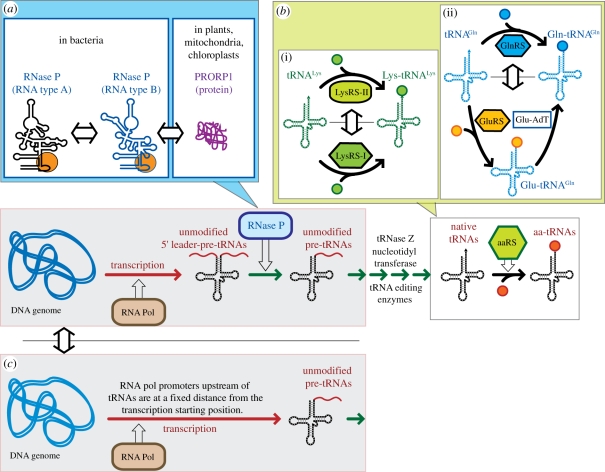Figure 5.
Examples of functional equivalence classes within the process of tRNA synthesis and activation from the bacterial operating system. (a) In Escherichia coli, the endogenous type A RNase P RNA can be substituted by a type B RNase P RNA [25]. It can also be substituted by PROP1, a proteinaceous RNase P from plant mitochondria (Arabidopsis thaliana) [24]. (b) (i) Lysyl-tRNA synthetases (LysRS) have been found in different organisms and are categorized as either class I or class II. Substituting a class II bacterial LysRS by a class I archaeal LysRS still allows the bacteria to operate the COS [22]. (ii) The direct pathway of amino acylation of glutaminyl tRNA found in E. coli can potentially be substituted by an indirect pathway involving first mischarging of tRNAgln with Glu by glutamyl-tRNA synthetase (GluRS) to form glutamyl tRNAGln. Then, glutamyl tRNAGln is converted into glutaminyl tRNAgln by Glu-tRNAGln amidotransferase (Glu-AdT) [23]. (c) The process of maturation of 5′-leader pre-tRNA by RNase P does not exist anymore in Nanoarchaeum equitans. Instead, the tRNA genes code for tRNA precursors without 5′ leader because transcription starts now at the level of the mature 5′ end [57]. With respect to mature tRNAs production for translation, the Nanoarchaeum process is expected to be equivalent to the RNase P-dependent one. However, this remains to be tested in vivo. Colour code for reaction processes is the same as in figure 1c.

